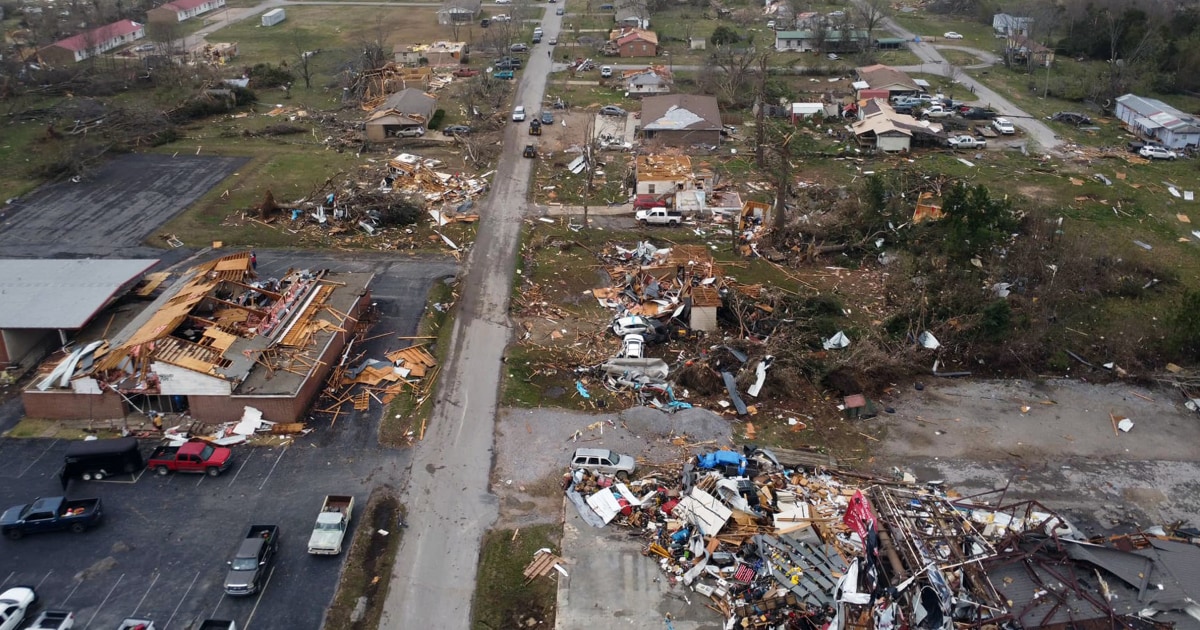NOAA Reinstates Fired Workers Amidst Storm Recovery: Understanding the Implications
In a surprising turn of events, the National Oceanic and Atmospheric Administration (NOAA) has reinstated workers who were previously dismissed in light of recent severe storms. This decision raises significant questions about the agency’s response to these natural disasters and its future preparedness strategies. As communities across the nation grapple with the aftermath of extreme weather events, understanding the implications of NOAA’s actions becomes crucial for ensuring better disaster response moving forward.
The Context of NOAA’s Decision
NOAA plays a pivotal role in monitoring weather patterns, issuing forecasts, and conducting research that informs disaster preparedness across the United States. Recently, the agency faced scrutiny after dismissing several employees, leading to concerns about its capability to manage ongoing storm recovery efforts effectively. The reinstatement of these workers comes at a time when the nation is witnessing an increase in the frequency and severity of storms, prompting a reevaluation of how NOAA operates and supports affected communities.
Why Were Workers Dismissed?
The initial decision to terminate these workers was attributed to budgetary constraints and a restructuring effort aimed at streamlining NOAA’s operations. However, critics argued that this move jeopardized the agency’s ability to respond adequately to disasters, especially as communities were recovering from recent hurricanes, floods, and wildfires. The reinstatement suggests that NOAA acknowledges the need for a robust workforce to deal with the growing challenges posed by climate change and extreme weather.
What Does Reinstatement Mean for Future Preparedness?
The reinstatement of these workers signifies a critical step toward bolstering NOAA’s capabilities in disaster response and preparedness. Here are some implications of this decision:
- Restoring Expertise: The reinstated workers bring valuable experience and knowledge that will enhance NOAA’s operational effectiveness. Their familiarity with ongoing projects and local conditions is essential for timely and accurate disaster response.
- Improving Morale: This decision also serves to boost morale within the agency. Employees are more likely to perform effectively when they feel secure in their jobs and valued for their contributions.
- Increased Capacity: With more personnel on board, NOAA can expand its initiatives related to storm forecasting, research, and community outreach, ultimately leading to better-prepared communities.
- Reaffirming Commitment: The reinstatement sends a strong message about NOAA’s commitment to addressing climate challenges and prioritizing public safety. It demonstrates a recognition of the agency’s vital role in storm recovery efforts.
Challenges Ahead for NOAA
While the reinstatement of workers is a positive step, NOAA still faces several challenges as it moves forward:
- Budget Constraints: Even with additional personnel, NOAA’s budget remains a concern. The agency must balance its financial resources while ensuring effective disaster response and recovery operations.
- Public Trust: Rebuilding public trust in NOAA is essential. The agency must communicate effectively about its operations, decisions, and the impact of reinstating these workers on future storm preparedness.
- Climate Change Adaptation: As climate change continues to exacerbate weather extremes, NOAA must adapt its strategies and develop innovative approaches to meet the evolving needs of communities.
The Role of Collaboration in Disaster Response
Effective disaster response is not solely the responsibility of NOAA. It requires collaboration among various stakeholders, including federal, state, and local agencies, non-profit organizations, and the communities themselves. Here are some ways that collaboration can enhance storm recovery efforts:
- Information Sharing: Agencies must work together to share data and insights about storm patterns, forecasts, and recovery strategies. This collaboration can help communities make informed decisions and take timely action.
- Community Engagement: Involving local communities in preparedness planning ensures that strategies reflect their unique needs and resources. Engaged communities are often more resilient in the face of disasters.
- Resource Allocation: Collaborative efforts can lead to more efficient resource allocation, ensuring that aid reaches those who need it most during recovery phases.
Looking Ahead: Enhancing NOAA’s Focus on Preparedness
The reinstatement of workers at NOAA amidst storm recovery highlights a crucial moment for the agency as it seeks to enhance its preparedness strategies. Here are some recommendations for NOAA to consider:
- Invest in Training: Continuing education and training for staff is vital. As technology and climate science evolve, keeping employees equipped with the latest knowledge will ensure better preparedness and response.
- Utilize Technology: Leveraging advanced technologies, such as artificial intelligence and machine learning, can improve forecasting accuracy and operational efficiency.
- Strengthen Community Programs: NOAA should enhance programs that engage and educate communities about disaster preparedness, response, and recovery strategies.
Conclusion
The reinstatement of fired workers at NOAA amidst storm recovery signals a renewed commitment to effective disaster response and preparedness. As communities face increasing challenges from severe weather events, NOAA’s actions reflect a recognition of the agency’s critical role in safeguarding lives and property. By restoring expertise, improving morale, and fostering collaboration, NOAA can enhance its efforts to prepare for future storms. The road ahead may be fraught with challenges, but with a united approach and a focus on innovation, NOAA is poised to emerge as a stronger, more resilient agency in the face of climate change.
See more Your Daily Weather



